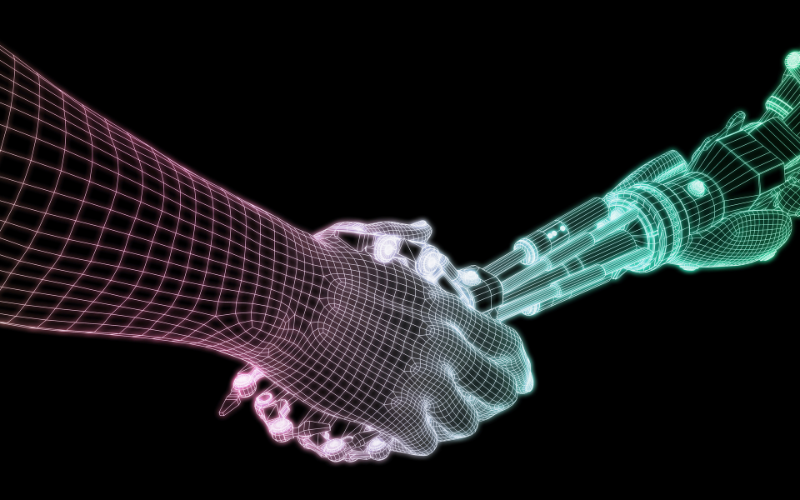The Future of Peer Learning: Collaborative Simulations as a Tool for Team-Based Development in Early Careers.
Introduction: The Changing Landscape of Corporate Learning
Imagine you’re leading the L&D team of a fast-growing company. You’ve brought on a cohort of bright, early-career professionals, but they’re not fully prepared for the team-oriented, fast-paced environment they’re about to step into. Traditional training methods—lectures, self-paced e-learning, one-on-one mentoring—have their place. But the demands of today’s workplace require something more dynamic, something more aligned with how teams work in real life.
What if there was a way to accelerate the development of your new hires, not just in terms of technical skills, but in the soft skills that make or break a team’s success? What if you could immerse them in real-world scenarios where teamwork, collaboration, and communication were not just taught but practised in real-time?
Welcome to the future of peer learning: collaborative simulations.
For an L&D leader, this isn’t just a training trend—it’s a strategic shift. It’s about moving from individual learning models to immersive, team-based experiences that prepare your people to succeed in the complex, fast-evolving workplace.
Moving Beyond Traditional Learning: Why Peer Collaboration is Key
Let’s start with the core of peer learning: working together. It’s not a revolutionary idea, but the way we apply it in corporate training needs to evolve. For years, peer learning was about mentoring, job shadowing, or peer feedback sessions. These methods are valuable, but they don’t capture the depth of real-world collaboration.
In a workplace where hybrid teams, cross-functional projects, and rapid decision-making are the norm, we need something more interactive and engaging. That’s where collaborative simulations come in.
Here’s the premise: Instead of siloed training modules, you place new hires into carefully designed simulations that mirror the kinds of challenges they’ll face on the job. Whether it’s managing client portfolios, solving operational issues, or handling a PR crisis, these scenarios are designed to require teamwork, communication, and problem-solving.
“As we moved from individual to team-based simulations, we saw an immediate change in how our early-career professionals approached problem-solving,” explains Rebecca Adams, Head of L&D at a leading global bank. “The shift wasn’t just in skills—it was in mindset. They started thinking more like a team and less like individuals trying to ‘get through’ training.”
The Power of Immersive Learning: Building Real-World Skills
So, why are collaborative simulations so effective?
The answer lies in how they recreate the pressure, urgency, and complexity of real-life work situations. These simulations offer participants the chance to take action, make mistakes, and learn from their peers in a controlled, supportive environment.
Think of it this way: rather than passively consuming information, your new hires are thrust into the heart of the action. They must collaborate, communicate, and strategise—all while managing the stakes. This kind of active learning deepens engagement and retention because it mirrors what they’ll experience in the real world.
“Simulations allow us to create a safe space for failure,” says David Mitchell, a learning specialist in the tech industry. “Our early-career hires work through real-time challenges together. They make decisions, see the consequences, and learn how to improve. It’s far more powerful than a classroom lecture because they’re applying what they’ve learned as a team.”
Collaborative Simulations: The Soft Skills Accelerator
Every L&D leader knows the importance of soft skills: the interpersonal abilities that allow teams to function effectively. In fact, research by LinkedIn Learning highlights that 92% of talent professionals consider soft skills just as critical as technical skills, if not more so.
However, soft skills are notoriously difficult to teach through conventional training. You can’t learn emotional intelligence or conflict resolution from a textbook. You need to experience it.
This is where collaborative simulations come into their own. By placing participants in high-stakes, realistic scenarios, they’re forced to practice communication, leadership, and adaptability in real time. And, crucially, they get to do this with their peers, creating a learning experience rooted in collaboration and shared growth.
Take, for instance, a scenario where a team must respond to a cybersecurity threat in real-time. As they work through the crisis, not only are they applying technical skills, but they’re also developing essential soft skills: decision-making under pressure, clear communication, and collaboration in stressful situations.
The feedback loops in these simulations are immediate and impactful. Peer-to-peer feedback creates an environment where trust, accountability, and emotional intelligence are naturally developed.
Measurable Impact: What Collaborative Simulations Bring to the Table
What sets collaborative simulations apart from other learning methods is the tangible impact they can have on both individual and team performance. And for someone managing the L&D function, this impact isn’t just about skills; it’s about measurable results that align with your organisation’s goals.
Incorporating collaborative simulations into early-career development programs can lead to significant improvements in employee engagement, performance, and retention. A study by PwC found that employees who underwent team-based simulations were 40% more likely to be promoted within two years, compared to those who received traditional training.
Moreover, data from Bersin by Deloitte highlights that companies using experiential, peer-driven learning models—such as collaborative simulations—reported a 25% reduction in onboarding time for new hires. For an L&D team, this translates into faster ramp-up times, better productivity, and a stronger return on investment.
“We noticed an almost immediate improvement in our teams’ ability to handle high-pressure situations,” says Emily Clarke, an L&D director at a global insurance firm. “Our graduate trainees now work seamlessly as a unit, and their confidence in both soft and technical skills has skyrocketed.”
The Role of Technology: AI, VR, and The Next Frontier
As an L&D leader, you’re probably always looking ahead, thinking about how technology will influence learning. Collaborative simulations are evolving rapidly, particularly with the rise of AI and VR technologies.
AI-driven simulations can adapt to individual learning styles, offering personalised experiences that maximise engagement. Meanwhile, VR takes immersion to the next level, allowing teams to step into virtual worlds that replicate real-life working environments, from negotiating contracts in a simulated boardroom to troubleshooting technical issues on a virtual oil rig.
While this technology may still seem futuristic, it’s already being integrated into forward-thinking L&D strategies. Organisations that embrace these tools will not only enhance the effectiveness of their training but also position themselves as leaders in talent development.
What’s Next: The Future of Learning is Collaborative
For L&D teams, the future of early-career development lies in collaboration, not competition. It’s about creating experiences where teams can learn and grow together, preparing them for the challenges they’ll face in the real world.
Collaborative simulations offer a powerful way to achieve this. By immersing teams in realistic, high-stakes scenarios, they foster both hard and soft skills, while building the foundations for strong, cohesive teams.
So, if you’re looking to develop a workforce that thrives on collaboration, agility, and shared problem-solving, it’s time to explore the possibilities of collaborative simulations. The future of peer learning is here, and it’s ready to reshape the way you think about corporate training.
At MDA Training, we specialise in delivering cutting-edge, team-based learning experiences through our innovative simulations. With a focus on experiential learning, we tailor our simulations to mirror the real-world situations your teams will encounter, ensuring they’re prepared to collaborate, problem-solve, and lead effectively.
Discover how our customised collaborative simulations can enhance your early-career development programmes. Get in touch with MDA Training’s experts today to explore how we can help you shape your future leaders through immersive, impactful learning experiences.



















